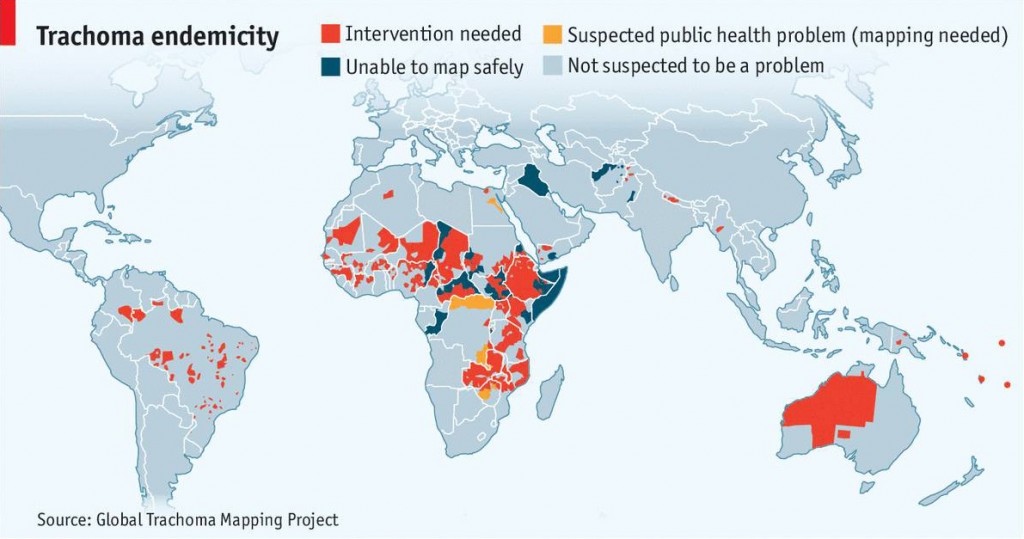New milestones in this long battle for sight.
Trichiasis is the last stage of the trachomaan eye disease that rarely grabs the headlines, but is unfortunately responsible for 3% of avoidable blindness cases worldwide.
It is an eye infection caused by certain strains of the bacterium Chlamydia trachomatis, prevalent mainly in poor, overcrowded communities with limited access to uncontaminated water and lack of sanitation. In fact, Chlamydia trachomatis is transmitted by direct contact (hands or clothing) and through flies that have settled on the eye or nose secretions of infected people.
In its early stages, trachoma is transmitted among children between the ages of 1 and 5 years and through the women who care for them. After repeated infections the eyelids turn inwards (trichiasis) causing severe suffering as the eyelashes scratch the surface of the cornea with each blink. Consider that on average we blink 15-20 times per minute and, therefore, the pain from trachoma is constant and the rubbing of the eyelashes on the ocular surface over time results in scarring that makes us blind.
Trachoma currently affects about 2.2 million people worldwide, of whom about 1.2 million are now irreversibly blind. It is a health emergency in some 51 countries in Asia, the Middle East and, above all, Africa where the highest number of cases is concentrated.
Trachoma is an infection that can be prevented through some basic hygiene rules, such as regular washing of the face and general personal hygiene. In addition, it can be treated pharmacologically with an antibiotic, Zithromax, and eyelid deformities induced by this disease can be surgically corrected.
Until now, however, it was difficult to know exactly where the main efforts to eradicate this disease were concentrated and what the results were, but in February 2016 the Global Trachoma Mapping Project (GTMP http://www.sightsavers.org/gtmp/)a true atlas of risk.
GTMP is an investigation that started in December 2012 at the initiative of Sightsavers, a UK charity working in the field of vision prevention, and with the support of over 53 organisations including 30 Departments of Health, the London School of Hygiene & Tropical Medicine, the International Trachoma Initiative, the WTO and over 20 non-profit organisations. The project was funded to the tune of £10.6 million by the UK government and co-funded to the tune of approximately £6 million by USAID.
The survey was completed in January 2016, after more than 550 teams of specialist workers collected data on 2.6 million people over a three-year period to see if they had been infected. The sample was drawn from a population of 224 million people from 29 countries considered to be at risk. The methodology of the project was designed to be simple and reliable: no paper reports, but rather data collection through smartphones. In this way, the data cannot be lost in the rain and its quality can be continuously verified. Furthermore, there can be no doubt about the geographical origin of the readings, since the phones can be tracked via the Global Positioning System.
There is some good news:
- Malawi, Nigeria, Tanzania and Uganda were found to have much lower rates of trachoma than expected.
- Laos and Cambodia, which have not been surveyed since the 1960s, were found to be virtually free of the disease.
- For countries where the infection is still widespread, a blanket distribution of antibiotics and education programmes on facial hygiene have been initiated.
The WTO (World Health Organisation) aspires to eliminate trachoma as a public health risk by 2020, with only a few sporadic cases to be entrusted to the care of local doctors.
It is certainly an ambitious goal but... fortune favours the bold!
Dr. Carmelo Chines
Direttore responsabile
